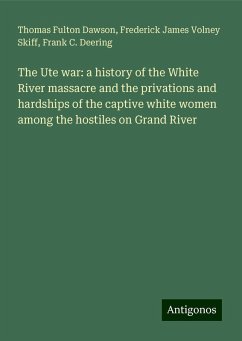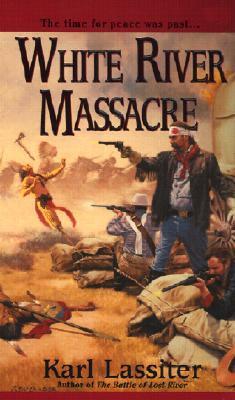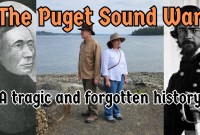
Echoes in the Tahoma Shadow: The Enduring Legend of the White River Massacre
America’s narrative tapestry is woven with threads of myth and memory, heroism and heartbreak. From the frontier tales of Paul Bunyan to the urban legends of Bigfoot, these stories shape our collective consciousness, defining who we are and where we come from. Yet, not all legends are born of campfire whimsy or larger-than-life feats. Some emerge from the crucible of conflict, forged in the brutal clash of cultures, leaving behind scars that demand to be remembered, understood, and reconciled. Among these darker, more poignant legends is the story of the White River Massacre, an event in Washington Territory that, nearly 170 years later, continues to resonate as a powerful, unsettling legend of dispossession, resistance, and the enduring quest for justice.
Nestled in the shadow of the majestic Tahoma (Mount Rainier), the White River Valley in the mid-19th century was a landscape of breathtaking beauty and burgeoning tension. The Puget Sound region, a vast expanse of dense forests, fertile valleys, and abundant waterways, was home to a rich mosaic of Indigenous peoples – the Nisqually, Puyallup, Muckleshoot, Suquamish, and many others. For millennia, their lives were intricately linked to the land, governed by ancient traditions, sustainable practices, and a profound spiritual connection to their ancestral territories.
The arrival of American settlers in increasing numbers, fueled by the fervent ideology of Manifest Destiny and the promise of land, irrevocably altered this delicate balance. By the 1850s, the trickle had become a torrent. Washington Territory, established in 1853, saw its first governor, Isaac Stevens, embark on an aggressive campaign to acquire Native lands through treaties. Stevens, a man of ambition and conviction, sought to clear the path for white settlement and development, often employing coercive tactics and offering terms that Indigenous leaders found deeply unsatisfactory and, ultimately, unsustainable.

The treaties, most notably the Treaty of Medicine Creek (1854) and the Treaty of Point Elliott (1855), were fraught with misunderstandings, misrepresentations, and outright deception. Signed under duress, often by appointed chiefs who lacked the authority to cede vast territories, these agreements confined tribes to small, often unproductive reservations, severing their ties to traditional hunting, fishing, and gathering grounds. From the Native perspective, these were not fair negotiations but existential threats. As historian Charles Wilkinson notes in "Messages from the Mountains," these treaties were "a foundational act of dispossession, laying the groundwork for conflicts that would define the region for decades."
The growing frustration among Indigenous communities was palpable. Promises of goods and services were often delayed or never materialized. Their traditional way of life was being systematically dismantled. The stage was set for an explosion.
The spark ignited in the autumn of 1855, leading to what became known as the Puget Sound War (1855-1856). On October 28, 1855, a series of coordinated attacks occurred on isolated settler cabins along the White River, near present-day Auburn and Kent. In what quickly became labeled the "White River Massacre," nine settlers – men, women, and children, including members of the Brannan and King families – were killed. The horror of these events spread like wildfire through the small, scattered white communities, igniting panic, fear, and a furious demand for retribution. For the settlers, it was an unprovoked act of savagery, a brutal massacre of innocents that justified immediate and overwhelming military response.
For the Indigenous combatants, however, these were acts of war, a desperate attempt to resist the encroachment that threatened their very existence. They saw themselves as defending their homeland, their culture, and their future against an invading force. The leader most closely associated with these attacks, and who would become the central figure in the legend, was Chief Leschi of the Nisqually people.
Leschi was not a man of impulsive violence. Before the war, he had been a respected leader, known for his intelligence and his efforts to negotiate peacefully with the Americans. He had actively opposed the Treaty of Medicine Creek, understanding its devastating implications for his people. When the war erupted, he found himself caught in an impossible bind: witness the complete destruction of his people’s way of life, or resist. He chose resistance, rallying warriors from various tribes, including the Muckleshoot and Klickitat, to push back against the settlers.
The White River attacks, while undeniably tragic for the settler families involved, were part of a broader military strategy aimed at disrupting American expansion and forcing a renegotiation of the treaties. Yet, the American authorities swiftly condemned Leschi as a murderer, placing a bounty on his head. He became the primary target of the territorial militia and federal troops.
The ensuing conflict was brutal. Skirmishes, ambushes, and retaliatory raids scarred the landscape. Native communities were uprooted, their homes destroyed. Leschi and his followers fought with determination, but they were ultimately outmatched by the superior firepower and numbers of the American forces. By early 1856, with his forces dwindling and his people suffering immensely, Leschi sought refuge with relatives in the eastern part of the territory. However, in a betrayal that further cemented his tragic legend, he was captured by a Klickitat kinsman and handed over to the Americans for a reward.
What followed was a legal farce. Leschi was tried twice for the murder of Colonel A.B. Moses, a militiaman killed during a skirmish unrelated to the White River attacks. The first jury deadlocked, with some members arguing that Leschi was a prisoner of war, not a criminal. But the political will for a conviction was overwhelming. At his second trial, in an atmosphere charged with anti-Native sentiment, Leschi was found guilty. Despite compelling arguments from his defense that he was a combatant in a war, not a common criminal, and his steadfast assertion of innocence regarding the specific charge, he was sentenced to hang.

On February 19, 1858, Chief Leschi was executed near present-day Fort Steilacoom. His final words, translated by a witness, reportedly proclaimed his innocence: "I am innocent, I did not kill anyone." His death, a stark symbol of the injustices of the era, did not bring peace. Instead, it planted a seed of enduring grievance and a powerful legend in the hearts of his people and among those few settlers who harbored doubts about his guilt.
For generations, the official narrative of the White River Massacre and the Puget Sound War painted Indigenous resistance as savage banditry and Chief Leschi as a bloodthirsty murderer. History, as is often the case, was written by the victors. Yet, the legend of Leschi – a brave warrior, a defender of his people, a victim of injustice – persisted through oral traditions, whispered stories, and the quiet remembrance of Native families. He became a symbol of Native American sovereignty and the enduring struggle against oppression.
In the latter half of the 20th century, as American society began to grapple more honestly with its past, the legend of Leschi began to emerge from the shadows. Historians, legal scholars, and tribal elders initiated efforts to re-examine the historical record. They argued that Leschi’s trial was deeply flawed, a political execution rather than a legitimate application of justice. The very premise of trying a war leader for murder was questioned, as was the impartiality of the court and the prevailing anti-Native sentiment.
The culmination of these efforts arrived in 2004, a landmark moment in the legend’s evolution. The Washington State Historical Society’s Chief Leschi Board of Inquiry, after a thorough review of historical documents and testimony, formally exonerated Chief Leschi. The board concluded that he had been "unlawfully executed" and that his trial was "a miscarriage of justice." This unprecedented act of historical rectification officially acknowledged what many had known in their hearts for nearly 150 years: Leschi was not a criminal, but a warrior who fought for his people, and his execution was a tragic error.
Today, the White River Massacre and the legend of Chief Leschi serve as a powerful testament to the complex and often painful legacy of America’s westward expansion. They are not merely dusty historical facts but living narratives that continue to shape the identities of the Muckleshoot, Nisqually, and other tribes of the Puget Sound. Memorials stand in Leschi’s honor, and his name graces schools, parks, and institutions. His story is taught in classrooms, not as a footnote, but as a crucial chapter in the ongoing struggle for truth and reconciliation.
The legend of the White River Massacre is a challenging one because it forces us to confront uncomfortable truths about the foundations of American society. It reminds us that "legends" are not always comforting tales of heroism, but can also be the persistent echoes of unresolved conflicts, the lingering pain of injustice, and the enduring strength of a people determined to remember. It speaks to the power of memory, the resilience of Indigenous cultures, and the slow, arduous path toward acknowledging and repairing the wounds of the past. In the shadow of Tahoma, the story of Leschi and the White River still whispers, a vital legend urging us to listen, learn, and strive for a more just future.


